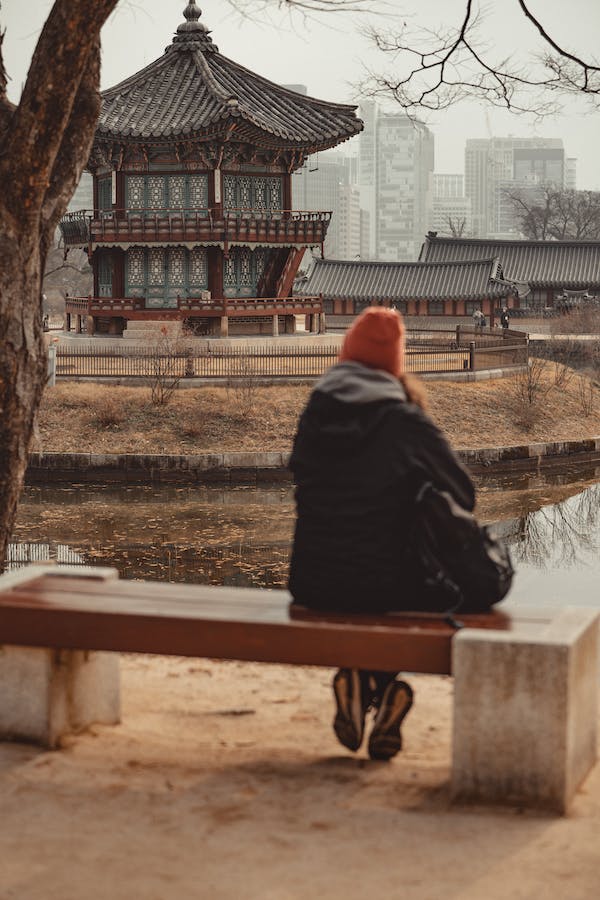The charming, environmentally friendly traditional Korean house, also known as Hanok (한옥 in the local language), is unique, simple, and harmonious but full of style. These houses were built in the 14th century, during the Joseon Dynasty.
The typical architectures of South Korea have managed, albeit with some difficulty, to endure the relentless building development of the 1970s. This led the Asian peninsula to be the modern country that’s now filled with skyscrapers, massive condominium complexes, and new apartments that resemble Matrix-style colonies, all the same and erected in every Korean city.
The Hanok (한옥) are harmonious buildings created regarding the coexistence of human beings and the surrounding natural environment; built reflecting the principles of Feng Shui, which you can think of as Chinese geomancy, analyzing the energies of the place to determine the correct positioning of the dwelling. Consideration is also supplied to the rules decreed by the baesanimsu (배산임수), which in its literal sense, means mountain behind and river in front.
The original construction materials used to build Hanok (한옥) are mainly rock, soil, and wood: recyclable, natural, and eco-friendly elements. The materials needed to construct a Hanok house are free of chemicals, making it a healthy environment. The doors, rafters, floor, pillars, and window frames are wooden; the roof is built with tiles; the walls, supporting beams, and floor are rock and clay; the doors and windows are by a paper called hanji. The paper covering the frames of windows and doors was made from tree pulp. And because all the building materials used are natural, Hanok houses have exceptional breathability, making them perfect for avoiding the summer heat.
The modern Hanoks set among multiple buildings, or you can stop by in some traditional villages are also built with some new materials; they even restore the old ones to suit the current living conditions.
South Korea has relatively hot summers and cold winters. As a result, the Hanok (한옥) was designed in such a way that they can remain cool with a parquet floor “daecheongo” and built with an inventive underfloor heating system of ondol. The method involves a layer of stone deposited underneath the flooring that, when heated, spreads up the heat into every room of the house, keeping the temperature comfortable warm and warrants peaceful nights. Sometimes, you sleep much better on the floor than on the mattresses. The systems are still in use in modern Korean residences. The clay used for the ceilings, walls, and floor is also an excellent thermal insulator.
The use of the heating system influenced the culture of South Korea to a lifestyle of sitting on the floor, even in current times. People take off their shoes when going inside a Korean home, as the floor is used for sleeping, eating, and overall leisure time. This custom began with Hanok and the ondol heating system.
The Hanok (한옥) typically have different shapes to adjust to the place’s characteristic, especially climatic. You can locate square shapes in the colder Northern regions to obstruct the cold wind, “L” shapes in the central districts to promote better air circulation, and upright structures in the hot Southern provinces.
Where Can You See Hanok in South Korea
You can admire the Hanok (한옥) almost everywhere, usually stuck between high-rise buildings or other contemporary buildings, there are numerous villages where you can find typical Korean houses preserved and which you can visit:
Bukchon Hanok Village- Central Seoul
People still reside here, among visitors and tourists who crowd the streets every day of this exquisite example of a traditional Korean village.
Namsangol Hanok Village- Seoul nearby Namsan mountain
This village, which opened in 1998, has a pavilion, a traditional garden, and five renovated Hanok.
Hahoe Folk Village- Andong
This traditional village of the Joseon dynasty is a few hours away from the city of Busan and the capital of South Korea.
Gyeongju Yangdong Folk Village- Gyeongju
The traditional village of the Joseon dynasty residing in a beautiful natural landscape is a member of the UNESCO World Heritage Sites.
Jeonju Hanok Village-Jeonju
This large village consists of over 800 traditional houses. Jeonju is also a delightful place to tour, which is a few hours from Seoul.
Jeju Folk Village-Jeju Island
This village in the south of the nation has over 100 straw-roofed Hanok houses.
If you’re traveling and traversing South Korea, you’re sure to come across a Hanok (한옥). The houses are excellent sites for photographic shoots and very pleasing to look at on the outside. You can also visit them, as some were converted into restaurants or cafes, while others were transformed into shops and studios for artists. You can also book a few nights in some of these typical Korean houses, which were turned into guests houses, a perfect chance to undergo a genuine Korean experience.
